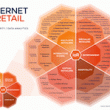

The Internet of things (IoT) has everyone giddy, writes Neil Chapman, the senior vice president and managing director for EMEA/International at ForgeRock. (more…)
February 22, 2016
Posted by: George Malim

Digitisation is often characterised through a number of key technologies such as social, mobile, analytics, cloud and IoT. However, the real impact of digitisation is echoed in the corridors of small, medium and especially large enterprises through digital transformation (DX), writes Dr Setrag Khoshafian, the chief evangelist and vice president of BPM technology at Pegasystems. (more…)
February 17, 2016
Posted by: George Malim

Our counting of IoT platforms has exceeded 300, writes Saverio Romeo, the principal analyst at Beecham Research. There are now more than 300 solutions that identify themselves as IoT platform offering a variety of services, from device management to data management passing by API management. (more…)
February 16, 2016
Posted by: George Malim

Event day: May 10 – 12 2016
Santa Clara Convention Center, CA
Internet of Things World 2016 is the world’s largest and most comprehensive IoT event with over 10,000 attendees, 350+ industry thought leaders and 200+ exhibitors. With a focus this year on monetizing the IoT revolution through bringing together ecosystem-wide attendees, stakeholders and investors, Internet of Things World provides a unique opportunity to meet key players within the marketplace.
Posted by: IoT global network

Event date: March 23-24, 2016
DoubleTree by Hilton Hotel London-West End
London, United Kingdom
In a growing IoT world, with 94% of companies already seeing a return on their IoT investments, the potential
benefits are clear. However, the path to a fully realised Industrial Internet is not without its challenges.
February 15, 2016
Posted by: IoT global network

The greatest importance for IoT within Africa as a whole is to provide critical information to its users, enabling them to make informed decisions and in a lot of cases save lives, writes Stephen Stewart, the regional director for Africa at Eseye, in the second part of his blog exploring IoT deployment in Africa. (more…)
February 10, 2016
Posted by: George Malim

Beecham Research has been working with specialist IoT event organiser Vinelake to create a new series of IoT events organised specifically around business users (see outline of events at this link). The aim of these, explains Robin Duke-Woolley, the chief executive of Beecham Research, is to be user centric and to explore the opportunities that M2M and IoT have for business users by assessing the business benefits they can gain from introducing connected device solutions. (more…)
Posted by: George Malim

Who would have thought that the Internet of Things (IoT) could impact anything from artificial insemination of cows to supply chain management decisions, writes Nick Finch, the technical director of Concentra? (more…)
February 9, 2016
Posted by: George Malim

The first wave of connectivity to serve the continent of Africa was mobile communications; in fact more than double the population in sub-Saharan Africa (SSA) has mobile phone access compared with access to paved roads, writes Stephen Stewart, the regional director for Africa at Eseye. (more…)
February 8, 2016
Posted by: George Malim

Intelligent device manufacturers are operating in an environment that is more demanding than ever: devices are becoming more interconnected in the Internet of Things (IoT), profit margins on those devices are being squeezed as competition heats-up across a global stage, and customers are demanding more flexibility in tailoring products to their needs than ever before, writes Vincent Smyth, the vice president for EMEA at Flexero Software. (more…)
Posted by: George Malim